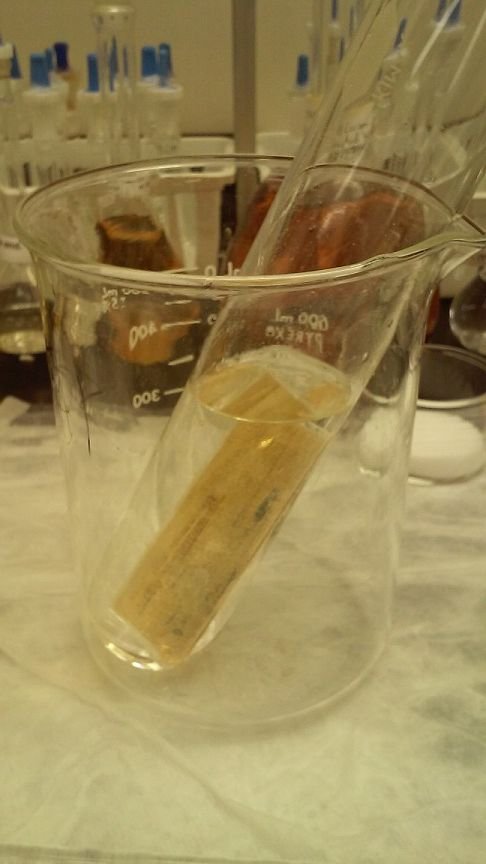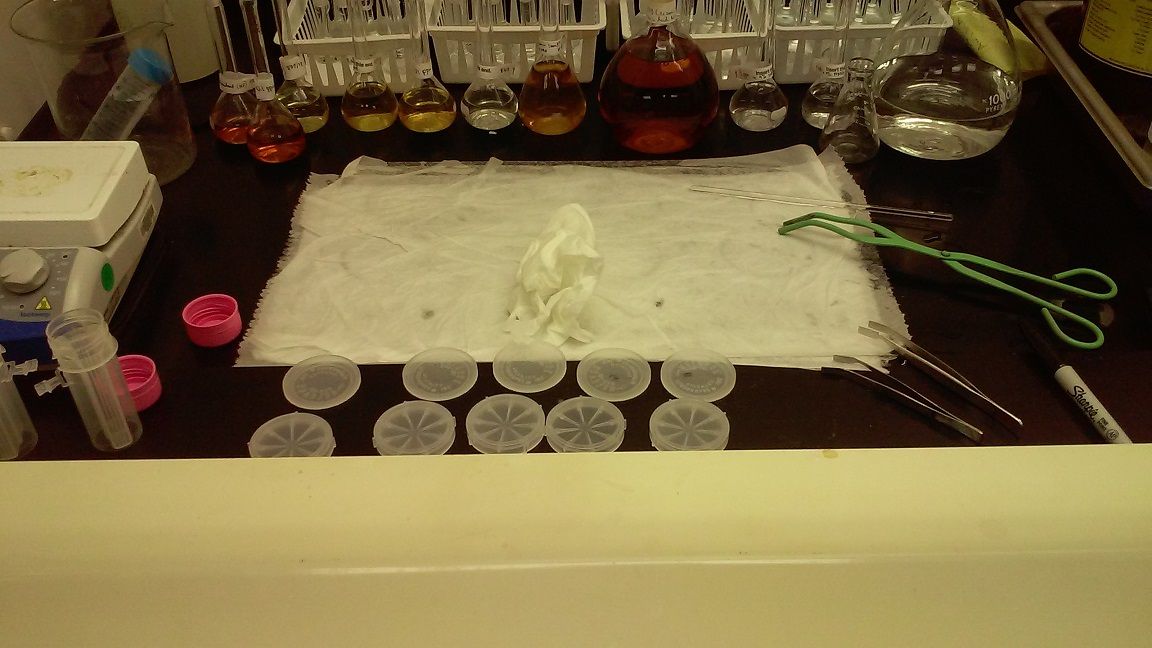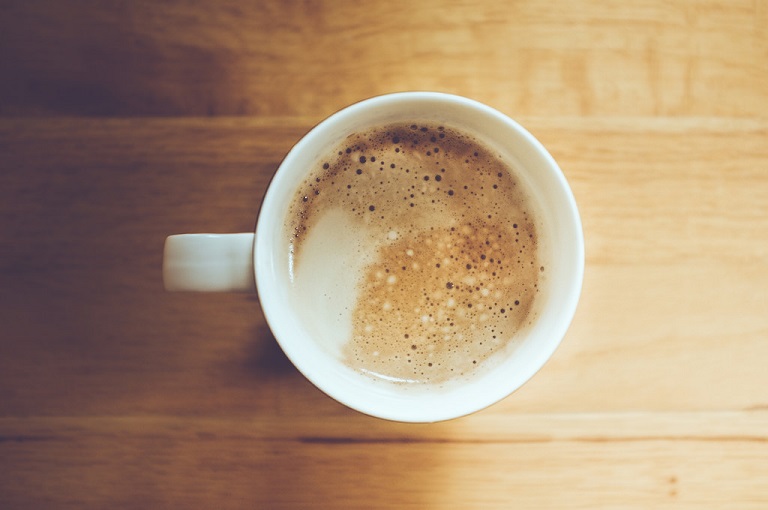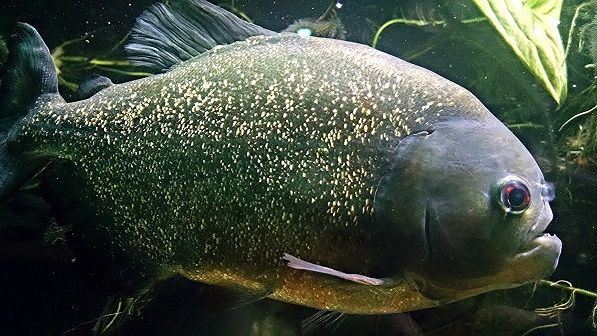The Lab Chronicles - Day 4, My New Morning Routine, Return of the Piranhas and Perceived Failure Turn Into Success!
I started continuing my work on a project that may result in new filters to rid our water of estrogenic compounds. I will try to report every day about work that I have done in the lab. With this I am hoping to get people a better understanding of what being a laboratory scientist looks like.
The science of today, is the technology of tomorrow.
-Edward Teller
My New Morning Routine
I usually start my day with a cup of coffee, a nice shower, breakfast and the brushing my teeth. I like taking it easy in the mornings, which is why I get up around 6 am, so I can enjoy the sun coming up.
The last few days I added casually handling liquid nitrogen. I know I am talking a lot about liquid nitrogen, but it is just really cool stuff to observe. I will move on from my new obsession, my apologies.
Why Science Can Never Stop Developing
This is a very big statement, and my example appears pretty small, however, it demonstrates the need for constant development in the sciences. During the fall semester, I have done the same experiment as I am doing now. The only difference is that we used external reflection IR spectroscopy rather than grazing angle ATR (GATR) IR spectroscopy. My observations are significant. This picture shows a comparison of the MUAM external reflection IR absorbance spectrum we took a month ago (red), against the ATR IR absorbance spectrum we took today (blue).
.jpg)
Both spectra were taken with a four wavenumber resolution (so not very high). For both I took a background blank reading in order to correct for any water vapor or carbon dioxide.
The two peaks represent a carbon-carbon stretch (do not quote me on this). As you can see, there is a peak (or "arm") present in the blue spectrum (where the cursor is located). That is a problem because that would indicate the presence of a stretch characteristic of methyl, which we should not see. We are assuming this is due to the fact that this layer was formed last week, and we did not take good care of it because we were unable to see any indication that we formed the layer on our gold substrate. What is good, is that we have a higher intensity in the blue spectrum (GATR), versus the red spectrum (external reflection). The red spectrum is actually multiplied by a factor of 50, which shows us that we figured out the right configuration to use our new accessory. My supervisor was actually so excited about this that he went and shared this spectrum with the patent holder of the GATR technology right away.
However, while this shows promise, this spectrum is far from perfect. We cannot understand the initial increase in the higher wavenumber region and we miss a few absorbance peaks to fully verify the presence of our SAM. Another issue is that we had a lower signal to noise ratio with higher resolution. We are confident that this is due to the relatively long storage our samples endured. Thus we decided to go and get a new batch of substrates.
Coming back to my big statement. The new spectrum we got reveals more detail due to higher intensities (50 fold!!). Thus we are able to make more precise conclusions than we would have using older technology. Through constant development in the sciences we are able to paint a more precise picture of the world that is surrounding us.
The Return of the Piranha
We decided to try to design a second SAM that consists of 1-Dodecyne, another organic compound attaching in a similar fashion compared to MUAM. Since the little gold cover slips we are working with easily break, we decided to run 2 for each SAM, 2 for MUAM and 2 for 1-Dodecyne. Thus I had to clean 5 gold cover slips. Additionally, we opted to use another carrier for our SAMs - two gold coated microscope slides. In short I had to make a big batch of piranha solution.
Since I got my piranha solution certificate last week (just kidding, it does not exist), I was allowed to mix it by myself. I made 85mL of piranha solution (70% sulfuric acid, 30% hydrogen peroxide). Making piranha is fun. You mix two corrosive liquids, fumes develop and you stirr everything with a little glas rod, ready to jump if an explosion happens. Once it is mixed, it is a little more tame.
I took a picture of it with one of the big substrates in. This slide never was coated with anything, but the one that was coated with MUAM a while ago was reaction very viciously. I was busy with something else, so I could not take a picture of that.

Handling piranha and tiny glass cover slips made me feel like a surgeon. Only my operation table is under a fume hood. We bought new tweezers specifically for handling the little glass cover slips. They are a pain to handle. If you grab them too hard, they break, too soft and they fall down and are contaminated. Surface chemistry is very precise work. When I was neutralizing the piranha solution I looked at my setup and thought it looked like a surgery. So here is the picture.
.jpg)
I worked from 9am until 5pm, just a little less than yesterday. However, I am really enjoying my time. It is a great feeling to be trusted with handling incredibly expensive instruments, were virtually a fingerprint means 4000 dollar in damage. Not to mention that I am working with solutions that can eat you alive. Additionally we are developing new experimental procedures. To be involved in all of this, as an almost equal team member, as an undergraduate student makes me feel very good. I am sorry if I sound cocky, but I am really enjoying what I am doing and to me, being where I am right now is a huge success. Especially considering that I almost failed high school.
I appreciate you all following you on my journey. Tomorrow will be short post and I am considering to not post at all because I am just setting up the deposition solutions.
On Friday, I am running another experiment and I am hopeful to report some breakthroughs.
Again, thank you very much! If you like this, please upvote. I also will be happy to answer questions. At this point I would like to recomment reading Days 1, 2 and 3 if you feel like you missed something.
Cheers @lesshorrible!


You got a 1.86% upvote from @upme requested by: @lesshorrible.
Send at least 2.5 SBD to @upme with a post link in the memo field to receive upvote next round.
To support our activity, please vote for my master @suggeelson, as a STEEM Witness
@originalworks
The @OriginalWorks bot has determined this post by @lesshorrible to be original material and upvoted it!
To call @OriginalWorks, simply reply to any post with @originalworks or !originalworks in your message!
This is a great article! You've got a new follower; looking forward to your future posts!
Thank you @tothemoonin2017! I hope that I will not disappoint. Cheers!
Good job very intresting
Interesting routine.
It's a pleasure to read you @lesshorrible.
Congratulations.
Thank you I really appreciate your kind words @armonia! Cheers!
Congratulations @lesshorrible, this post is the tenth most rewarded post (based on pending payouts) in the last 12 hours written by a User account holder (accounts that hold between 0.1 and 1.0 Mega Vests). The total number of posts by User account holders during this period was 2905 and the total pending payments to posts in this category was $6776.84. To see the full list of highest paid posts across all accounts categories, click here.
If you do not wish to receive these messages in future, please reply stop to this comment.
Great insights
You got a 1.41% upvote from @postpromoter courtesy of @lesshorrible! Want to promote your posts too? Check out the Steem Bot Tracker website for more info. If you would like to support development of @postpromoter and the bot tracker please vote for @yabapmatt for witness!
You got a 15.25% upvote from @allaz courtesy of @lesshorrible!
Fun post, @lesshorrible - I too am a science geek, majored in marine biology, and thoroughly enjoyed the work I did in the lab. Of course, having a professor who, like yours, treated me like an intelligent human being, rather than a lackey, was key in that.
If this technology does prove feasible to get estrogenic compounds out of the water, hooray! God knows we need that technology, as well as a way to filter out all the prescription meds that are tainting our drinking water, not to mention our oceans and waterways. How they are affecting amphibians and fish fry is, in my opinion, the tip of the iceberg.
Great work, and a much-needed technology in the making. You have a new follower, and I'll check out your previous posts. ;-)